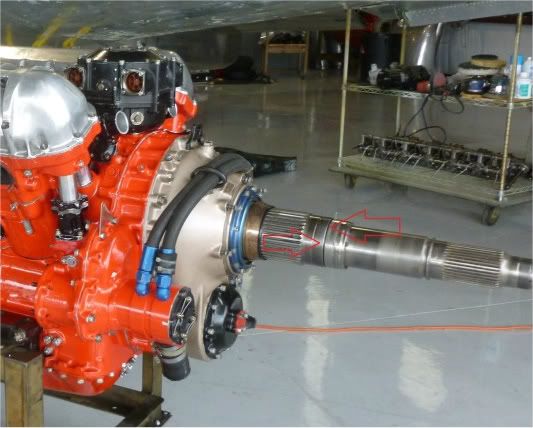Quote:
Originally Posted by CrashLanding

That's pretty sexy. Would be a blast to fly, I'm sure.
Couple questions from a writer who failed out of engineering college, how much difference does having two props make? I sort of understand why they spin different directions (spinning same direction would put too much pull on the frame left or right, correct?) but I'm interested to know how they got them spinning two directions on what appears to be one driveshaft.
|
Hi Crash...........

here is a close up, there are two shaft's, one inside the other, the red arrows are where the two shaft's interface.

The engineering principle is lost on me, i hope there is someone who can give the techno rundown. Although not applicable to this tuned engine anymore, it came from a Shackleton , the Griffon fitted utilised twin contrarotating props to harness the better torque this engine produced at lower rev's and give the aircraft better range, reliability and ecomony on its long sea going flights.
I asked the question and was told it would produce around 15% more power than a single prop, may not sound much but to go from 400 to 450mph is a massive step and i think it all helps.
I do know that bigger engines need bigger prop's, the Corsair is good example, prop so big that the wings were canted to accomodate it without huge undercart legs. The twin props fitted to Precious Metal are short cropped paddle type and I think it helps reduce frontal area , reduced torque effect, allow's them to spin faster and there is some vortec thing that happens with the second rear prop i dont understand.
hope someone can step in and give the difinitive answer !!!

.